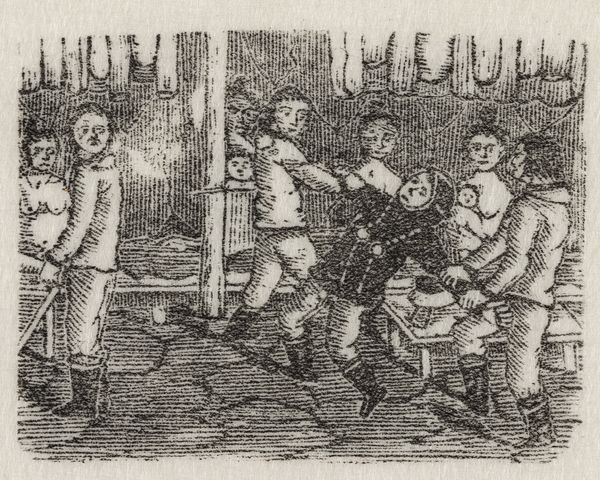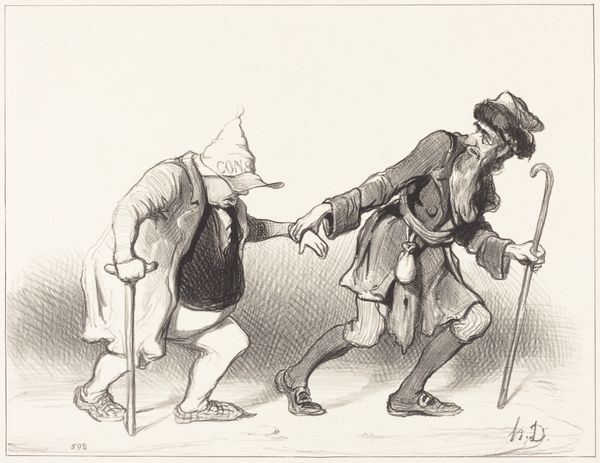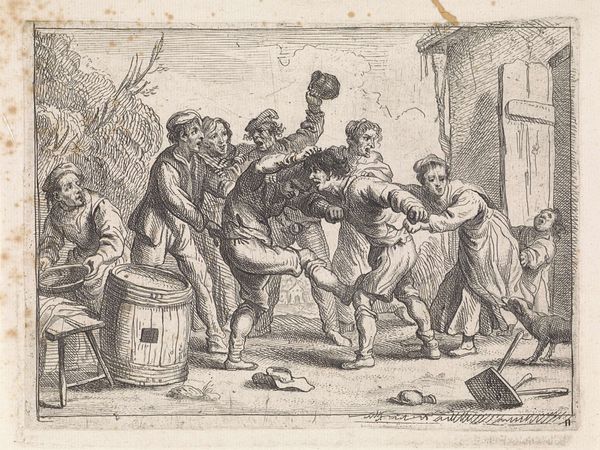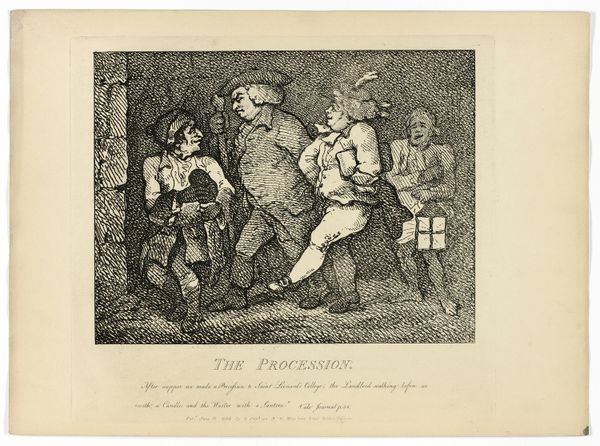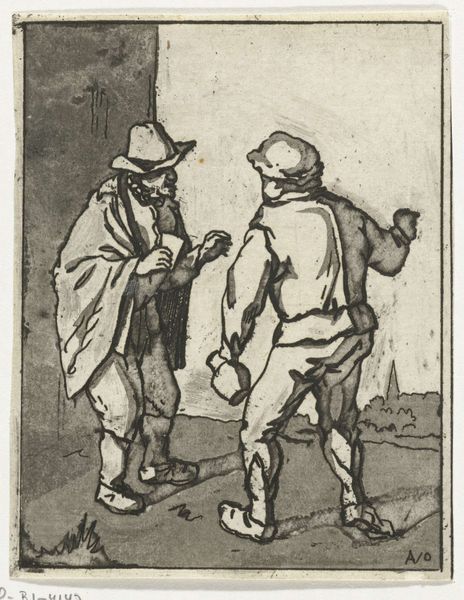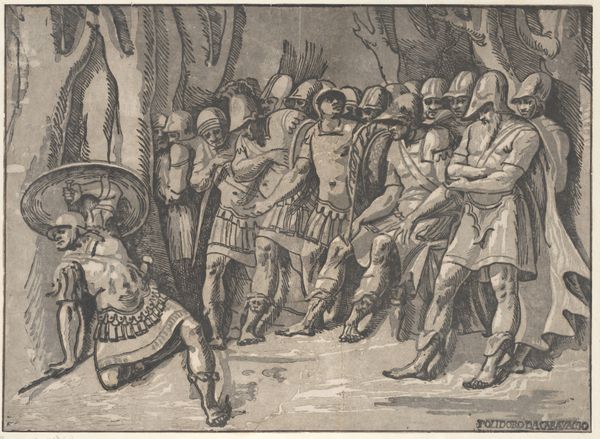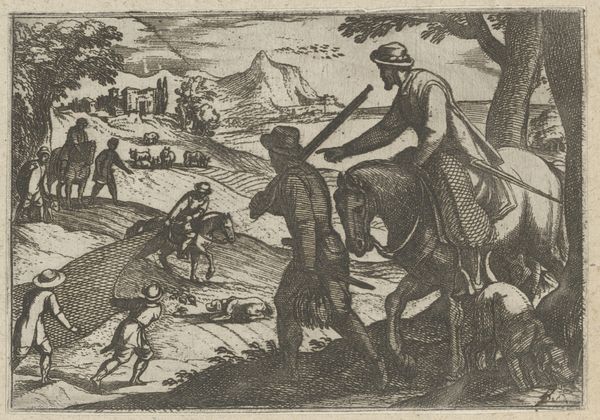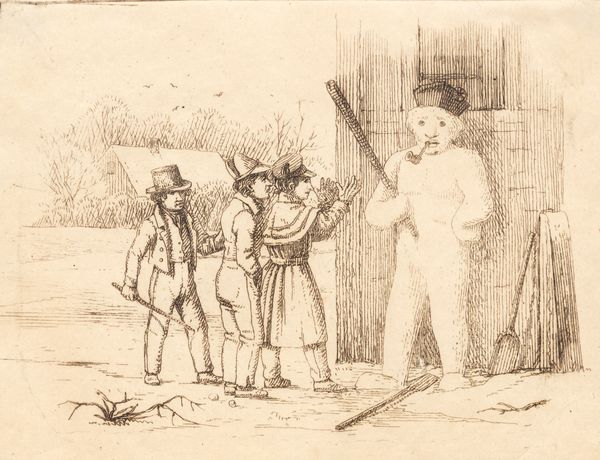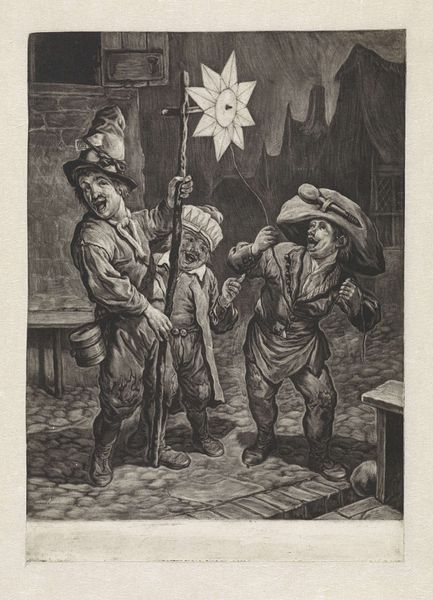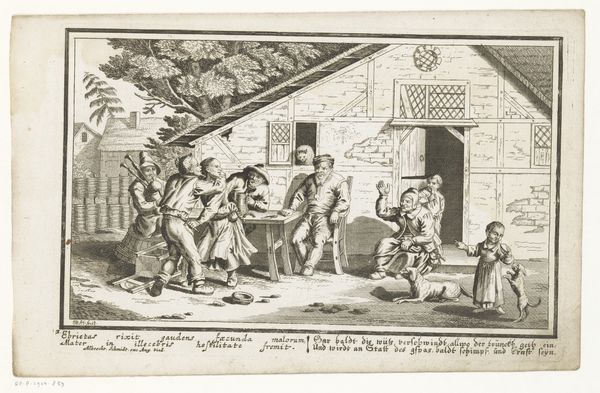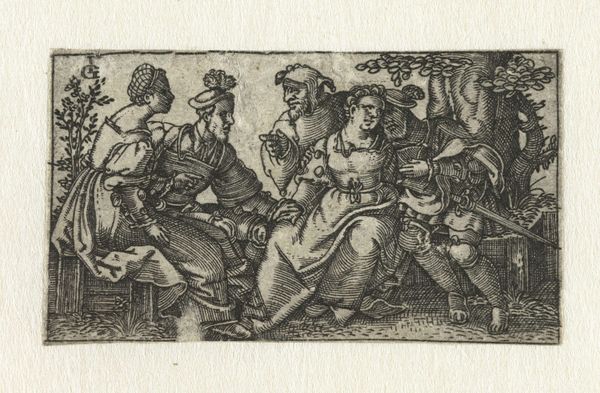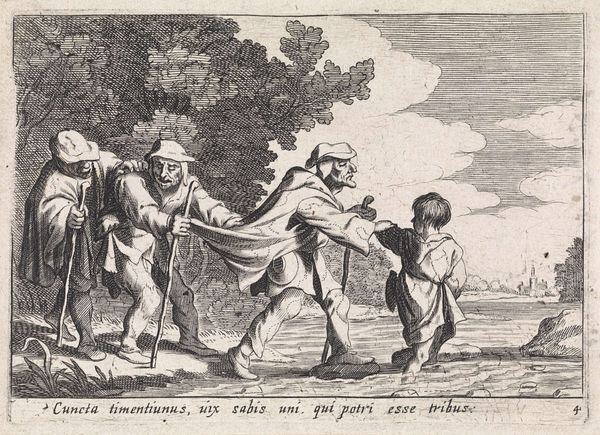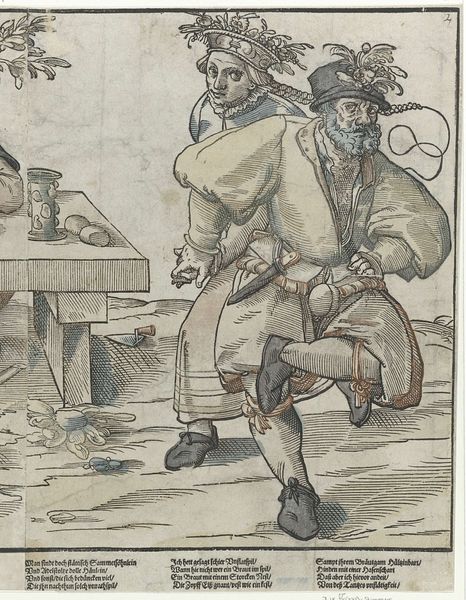
Heauton Timouroumenos, from The Comedies of Terence, 19th century reprint 1485 - 1528
0:00
0:00
drawing, print, woodcut
#
drawing
#
narrative-art
# print
#
figuration
#
woodcut
#
northern-renaissance
Dimensions: sheet: 3 1/2 x 5 5/8 in. (8.9 x 14.3 cm)
Copyright: Public Domain
Curator: This is a woodcut by Albrecht Dürer, created sometime between 1485 and 1528, titled "Heauton Timouroumenos," which comes from "The Comedies of Terence." Editor: Immediately, I am struck by the figures and stark, almost harsh rendering of their forms. The severe black and white, the linear quality… it all communicates a very rigid, perhaps even unforgiving atmosphere. Curator: Indeed. Dürer's expert use of the woodcut medium is crucial here. The sharp, clean lines create a remarkable level of detail. Notice the intricate patterns of the clothing, the varied textures he achieves with simple hatching and cross-hatching. The forms are all rigidly positioned, except one figure. What does that imply about what could be going on in the drama of the scene? Editor: Perhaps he emphasizes their social standing through dress and demeanor? Also, the way the architecture is rendered feels rather generic, almost like a stage set, doesn't it? That makes it all feel much more fabricated. I wonder if that’s the point? Curator: Well, in studying the composition, one observes the balanced asymmetry: The dark mass behind the two figures at center and left creates a spatial push towards the picture plane, in contrast with the open ground behind the single figure. Also the narrative of the Comedies likely demanded an every-town, no-place specificity of setting. Editor: That's fascinating. Thinking about its history, this print would have circulated amongst educated elites. This type of narrative scene also has to perform a civic function, helping to create discourse. This work certainly has social implications. Curator: Ultimately, this print serves as a wonderful testament to Dürer's technical mastery. He makes a dramatic statement. The value of a composition such as this shows Dürer understood not only technical concerns, but narrative needs as well. Editor: It’s the angularity, combined with its stark presentation, that still commands our attention. Its presence extends beyond time; its themes speak across historical and stylistic divides.
Comments
No comments
Be the first to comment and join the conversation on the ultimate creative platform.
